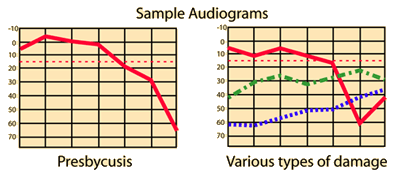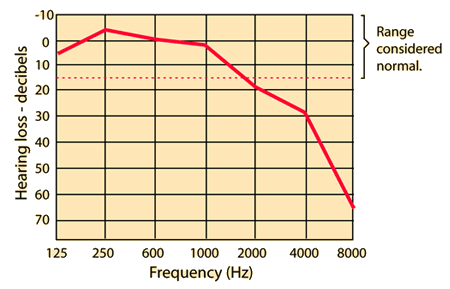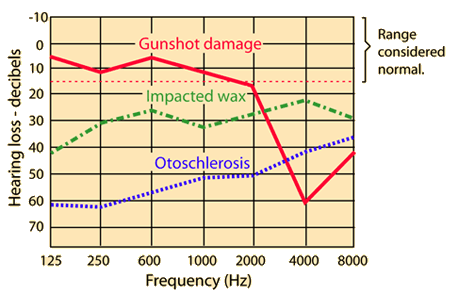Pure Tone Audiometry
The testing of hearing is most often carried out by establishing the threshold of hearing, the softest sound which can be perceived in a controlled environment. It is typical to do this testing with pure tones by providing calibrated tones to a person via earphones, allowing that person to increase the level until it can just be heard. Various strategies are used, but pure tone audiometry with tones starting at about 125 Hz and increasing by octaves, half-octaves, or third-octaves to about 8000 Hz is typical. Hearing tests of right and left ears are generally done independently. The results of such tests are summarized in audiograms.
| Audiograms compare hearing to the normal threshold of hearing, which varies with frequency as illustrated by the hearing curves. The audiogram is normalized to the hearing curve so that a straight horizontal line at 0 represents normal hearing. |
 |
| Hearing loss |
Hearing concepts
Dangers of Loud Sounds
| HyperPhysics***** Sound | R Nave |

